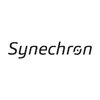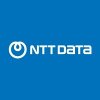Filter interviews by
Dell EMC Senior Software Engineer Interview Questions and Answers
Dell EMC Senior Software Engineer Interview Experiences
3 interviews found
(1 Question)
- Q1. Dsa python and storage
(1 Question)
- Q1. Write boarding, code refactoring
- Ans.
Boarding pass code refactoring involves optimizing and improving the code for generating boarding passes.
Identify redundant or inefficient code and streamline the process
Use object-oriented programming principles to improve code structure
Implement design patterns like Factory Method for generating different types of boarding passes
Optimize algorithms for generating and displaying boarding pass information
Skills evaluated in this interview
I applied via Recruitment Consulltant and was interviewed before Nov 2022. There were 5 interview rounds.

(1 Question)
- Q1. Java Design pattern Multithreading
(1 Question)
- Q1. Android and its desigj pattern Database Query Offline concept
Previous company projects and challenges
(1 Question)
- Q1. Salary and other perks discussion
Top trending discussions






Interview questions from similar companies

I applied via Naukri.com and was interviewed in Aug 2019. There were 4 interview rounds.
Interview Questionnaire
2 Questions
- Q1. Technical questions was all based on skills I added in my resume.
- Q2. Explain the last project, What challenges you faced & how you overcome that & what you learn from it.
- Ans.
Developed a web application for tracking inventory in real-time
Challenges faced included integrating with multiple APIs, handling large data sets, and ensuring data accuracy
Overcame challenges by breaking down tasks into smaller components, conducting thorough testing, and collaborating with team members
Learned the importance of communication, problem-solving, and attention to detail in software development
Interview Preparation Tips

I applied via Referral and was interviewed before Sep 2019. There was 1 interview round.
Interview Questionnaire
1 Question
- Q1. State HTTP methods. Comparable vs Comparator. Rest calls design & implementation. Overloading & overriding method differences, rules. Features of JDK 1.8. As java 8 supports default interface, how is diamo...
Interview Preparation Tips

Senior Software Engineer Interview Questions & Answers
VVDN Technologiesposted on 10 May 2018
Interview Questionnaire
5 Questions
- Q1. Create a Django Project and deploy with docker and GIT
- Ans.
Create a Django project, deploy with Docker and Git
Install Django and Docker
Create a new Django project
Initialize a Git repository
Create a Dockerfile for the Django project
Build and run the Docker image
Push the code to a Git repository
- Q2. GIT Fundamentals
- Q3. Resume projects
- Q4. Basic Python Questions
- Q5. Salary Expectation
Skills evaluated in this interview

I applied via Referral and was interviewed before Nov 2020. There were 3 interview rounds.
Interview Questionnaire
1 Question
- Q1. Fully technical and functional based questions
Interview Preparation Tips
I applied via Naukri.com and was interviewed in May 2021. There were 3 interview rounds.
Interview Questionnaire
2 Questions
- Q1. OOPS concepts
- Q2. SQL question

I appeared for an interview before Mar 2021.
(5 Questions)
Round duration - 60 Minutes
Round difficulty - Medium
In this round, I was first asked about the projects that I worked on in my previous company. I was also asked about the various tech stacks that I was familiar with and then the interviewer started asking me questions around Java and some basic OOPS concepts.
- Q1. What are the advantages of using Packages in Java?
- Ans.
Packages in Java help organize code, prevent naming conflicts, and provide access control.
Organizes code into logical groups for easier maintenance and readability
Prevents naming conflicts by allowing classes with the same name to coexist in different packages
Provides access control by using access modifiers like public, private, protected, and default
Facilitates reusability by allowing classes in one package to be acc...
- Q2. Why is Java considered platform independent, while the Java Virtual Machine (JVM) is platform dependent?
- Ans.
Java is platform independent because it compiles code into bytecode that can run on any system with a JVM, which is platform dependent.
Java code is compiled into bytecode, which is platform independent
The JVM interprets the bytecode and translates it into machine code specific to the underlying platform
This allows Java programs to run on any system with a JVM installed, making Java platform independent
- Q3. Why are Java Strings immutable in nature?
- Ans.
Java Strings are immutable to ensure thread safety, security, and optimization.
Immutable strings prevent accidental changes, ensuring data integrity.
String pool optimization reduces memory usage by reusing common strings.
Thread safety is guaranteed as strings cannot be modified concurrently.
Security is enhanced as sensitive information cannot be altered once set.
- Q4. What do you know about the JIT compiler?
- Ans.
JIT compiler stands for Just-In-Time compiler, which compiles code during runtime instead of ahead of time.
JIT compiler improves performance by compiling code on-the-fly as it is needed
It can optimize code based on runtime conditions and platform specifics
Examples include Java's HotSpot JIT compiler and .NET's RyuJIT compiler
- Q5. Can you differentiate between ArrayList and Vector in Java?
- Ans.
ArrayList is non-synchronized and faster, while Vector is synchronized and slower.
ArrayList is not synchronized, while Vector is synchronized.
ArrayList is faster than Vector due to lack of synchronization.
Vector is thread-safe, while ArrayList is not.
Example: ArrayList<String> list = new ArrayList<>(); Vector<String> vector = new Vector<>();
(8 Questions)
Round duration - 60 Minutes
Round difficulty - Medium
This round had questions revolving around OOPS , Spring Boot and Docker. The questions were preety decent and standard and can be answered if one has prior experience in the given tech stack.
- Q1. Can you explain the SOLID principles in Object-Oriented Design?
- Ans.
SOLID principles are a set of five design principles in object-oriented programming to make software designs more understandable, flexible, and maintainable.
S - Single Responsibility Principle: A class should have only one reason to change.
O - Open/Closed Principle: Software entities should be open for extension but closed for modification.
L - Liskov Substitution Principle: Objects of a superclass should be replaceable...
- Q2. What is the garbage collector in Java?
- Ans.
Garbage collector in Java is a built-in mechanism that automatically manages memory by reclaiming unused objects.
Garbage collector runs in the background to identify and remove objects that are no longer needed.
It helps prevent memory leaks and optimize memory usage.
Examples of garbage collectors in Java include Serial, Parallel, CMS, and G1.
- Q3. What does the @SpringBootApplication annotation do internally?
- Ans.
The @SpringBootApplication annotation is used to mark a class as a Spring Boot application.
It combines @Configuration, @EnableAutoConfiguration, and @ComponentScan annotations.
It enables the auto-configuration feature of Spring Boot.
It starts the Spring application context, which is the core of the Spring Framework.
It scans the current package and its sub-packages for components to register.
It serves as the entry point...
- Q4. What is dependency injection?
- Ans.
Dependency injection is a design pattern where components are provided with their dependencies rather than creating them internally.
Allows for easier testing by providing mock dependencies
Promotes loose coupling between components
Improves code reusability and maintainability
Examples: Constructor injection, Setter injection, Interface injection
- Q5. What are the basic annotations that Spring Boot offers?
- Ans.
Spring Boot offers basic annotations for various functionalities like mapping requests, handling exceptions, defining beans, etc.
1. @RestController - Used to define RESTful web services.
2. @RequestMapping - Maps HTTP requests to handler methods.
3. @Autowired - Injects dependencies into a Spring bean.
4. @Component - Indicates a class is a Spring component.
5. @Service - Indicates a class is a service component.
6. @Reposi...
- Q6. What are the most commonly used instructions in a Dockerfile?
- Ans.
The most commonly used instructions in a Dockerfile include FROM, RUN, COPY, and CMD.
FROM: Specifies the base image for the container
RUN: Executes commands in the container
COPY: Copies files and directories from the host to the container
CMD: Specifies the default command to run when the container starts
- Q7. What command can be run to import a pre-exported Docker image into another Docker host?
- Ans.
The command to import a pre-exported Docker image into another Docker host is 'docker load'
Use the 'docker load' command followed by the file path of the exported image tarball to import it into the Docker host
For example, 'docker load < my_image.tar.gz' will import the image from the file 'my_image.tar.gz'
Ensure that you have the necessary permissions to access the file and import images on the target Docker host
- Q8. Can you describe the lifecycle of a Docker container?
- Ans.
The lifecycle of a Docker container involves creation, running, pausing, restarting, and stopping.
1. Creation: A Docker container is created from a Docker image using the 'docker run' command.
2. Running: The container is started and runs the specified application or service.
3. Pausing: The container can be paused using the 'docker pause' command, which temporarily halts its processes.
4. Restarting: The container can be...
Round duration - 30 Minutes
Round difficulty - Easy
This was a Technical Cum HR round where I was first asked some basic Java related concepts and then we discussed
about my expectations from the company , learnings and growth in the forthcomig years. I would suggest be honest and
try to communicate your thoughts properly in these type of rounds to maximise your chances of getting selected.
Interview Preparation Tips
Tip 1 : Must do Previously asked Interview as well as Online Test Questions.
Tip 2 : Go through all the previous interview experiences from Codestudio and Leetcode.
Tip 1 : Have at-least 2 good projects explained in short with all important points covered.
Tip 2 : Every skill must be mentioned.
Tip 3 : Focus on skills, projects and experiences more.
Skills evaluated in this interview

I applied via Naukri.com and was interviewed before Sep 2019. There were 3 interview rounds.
Interview Questionnaire
2 Questions
- Q1. Domain related stuffs.
- Q2. Framework related questions commonly on the configuration part
Interview Preparation Tips
Dell EMC Interview FAQs
Tell us how to improve this page.
Dell EMC Interviews By Designations
- Dell EMC Software Engineer Interview Questions
- Dell EMC Principal Software Engineer Interview Questions
- Dell EMC Senior Software Engineer Interview Questions
- Dell EMC Application Developer Interview Questions
- Dell EMC Service Delivery Engineer Interview Questions
- Dell EMC Software Engineer2 Interview Questions
- Dell EMC Principal Engineer Interview Questions
- Dell EMC Graduate Intern Interview Questions
- Show more
Interview Questions for Popular Designations
- Software Developer Interview Questions
- Software Engineer Interview Questions
- Senior Engineer Interview Questions
- System Engineer Interview Questions
- Associate Software Engineer Interview Questions
- Project Engineer Interview Questions
- Senior Software Developer Interview Questions
- Lead Engineer Interview Questions
- Show more
Overall Interview Experience Rating
based on 3 interview experiences
Difficulty level
Duration
Senior Software Engineer Interview Questions from Similar Companies
Dell EMC Senior Software Engineer Reviews and Ratings
based on 73 reviews
Rating in categories
|
Senior Software Engineer
761
salaries
| ₹12.5 L/yr - ₹38.2 L/yr |
|
Software Engineer2
322
salaries
| ₹8 L/yr - ₹26 L/yr |
|
Software Engineer
303
salaries
| ₹6 L/yr - ₹24 L/yr |
|
Principal Software Engineer
261
salaries
| ₹17 L/yr - ₹55 L/yr |
|
Senior Engineer
246
salaries
| ₹9.5 L/yr - ₹28 L/yr |

Cognizant

DXC Technology

UST

Atos
- Home >
- Interviews >
- Dell EMC Interview Questions
















